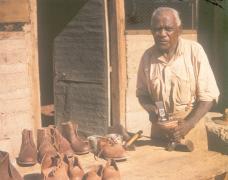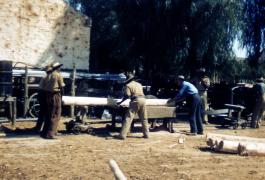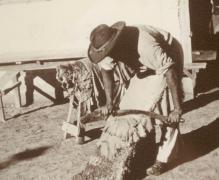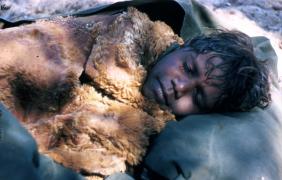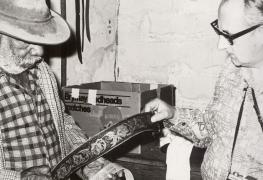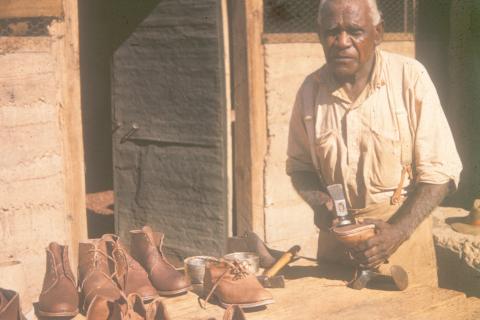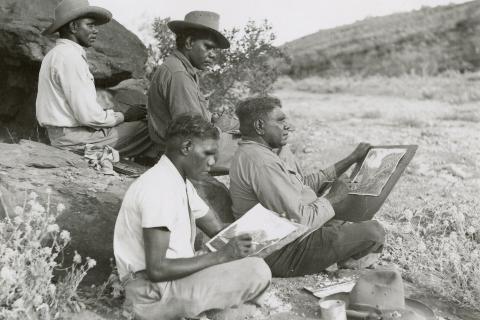“It was interesting to see the reaction of the Natives; the first skins were taken to the camp and handed around amongst the people to enable them to see and feel that they could now make leather ‘all the same as white man." 1
The tannery provided meaningful employment and saved money for the mission as the locally made boots were provided free of charge to the workers. The mission had for some time bought kangaroo skins from the Arrarnta people and sent them to be sold in Adelaide. During drought years Albrecht also had people skin the dead cattle and sold their hide. It was a logical step then for Albrecht to consider processing the skins at the mission thereby developing employment and increasing the mission’s income at the same time.
The first tanning troughs were made of hollowed-out logs. Tanning requires water, always a scarce commodity at Hermannsburg and this enterprise necessitated the building of underground tanks built of lime-concrete with a cover of cement over the inside surface (several can still be seen at Hermannsburg Mission). Once again, the enterprise had begun with insufficient knowledge of the market and the mission struggled to find a market for the tanned kangaroo leather.
Mrs. Albrecht began a women’s collective sewing the skins into mats and rugs. The women would work on the veranda of the Albrecht family home where they could spread the skins out and were paid for their work (or were paid per piece of work on a weekly basis). The products found a steady market down south. During the war years, Albrecht recalls that they had orders for two years in advance.
The first attempts to tan bullock hides failed and it was some time before Albrecht managed to find someone willing to provide the trade secrets necessary for success. Having finally mastered the tanning process, Albrecht was keen to continue to add value to the products and decided to try boot making. Arrarnta man, Manasse, was sent for training with R.M. Williams and after about six weeks Manasse then worked at a tannery in Brompton to increase his skills. On his return to Hermannsburg he taught others and they began making blucher boots.
A dedicated tannery was built in 1941, and then extended to double its size in 1962. As a sideline, men were trained in the skills of leatherworking and locally made whips, bridles, belts and similar such articles were offered for sale. Up to and during the war years, the mission was able to supply all its own needs in leather and leather goods.
- Albrecht in Leske / ed 2016:68 Albrecht and Lohe 1977 Hermannsburg: A Vision and a Mission
Media
